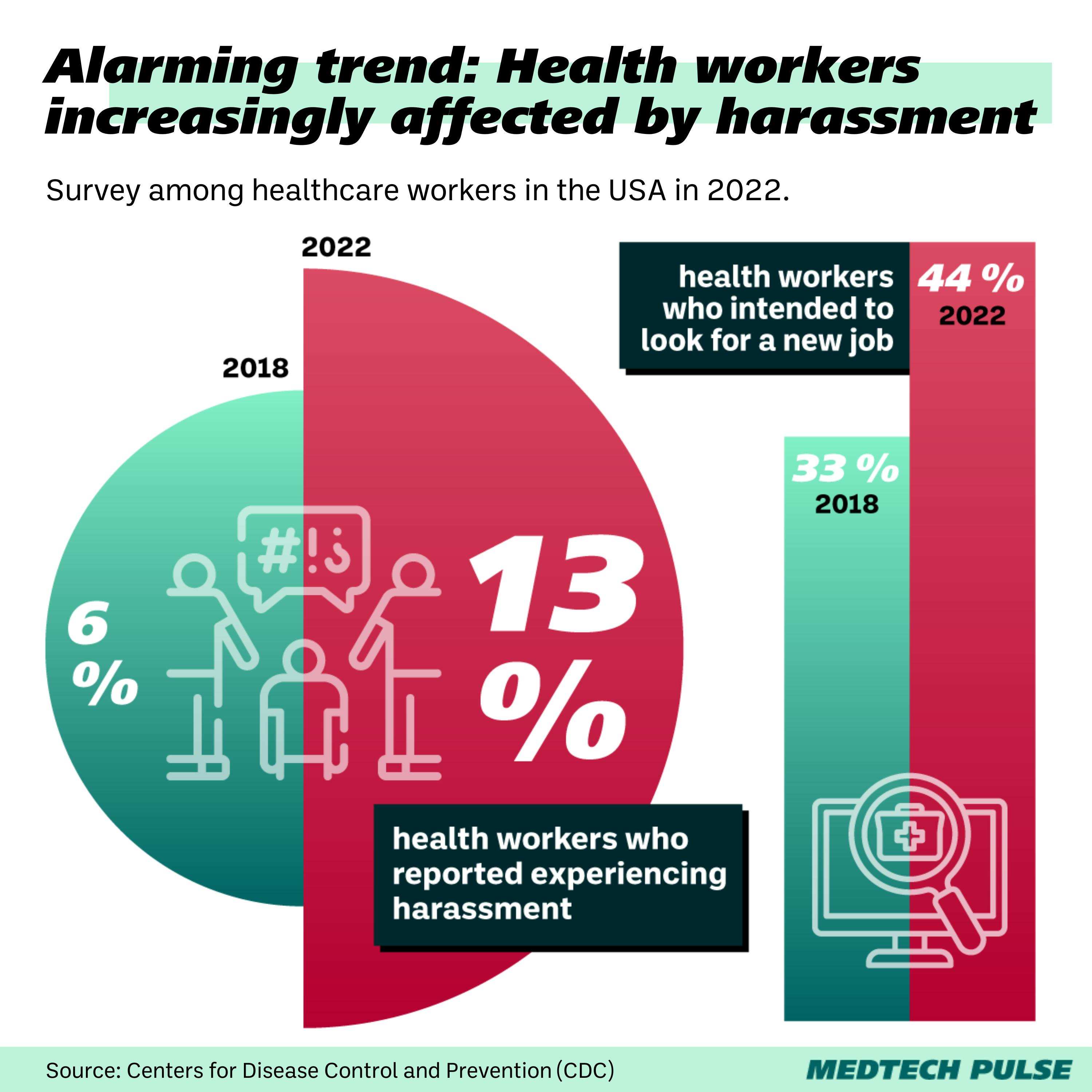Healthcare workers deserve better than this
Do you remember when we cheered for healthcare workers?
In 2020, people all over the world clapped on their balconies and clanged pots and pans out of their windows. All to honor and recognize the sacrifices healthcare workers were making to fight on the frontlines of the COVID-19 pandemic.
In those days, we couldn’t go a day without discussing healthcare worker safety.
Today, COVID is still around, but we now have more tools to protect ourselves. However, our healthcare systems and staff are still recovering from the toll 2020 took.
While we reckon and learn from the worker safety issues of that historic year and the pandemic’s fallout, a different clinical worker safety issue is on the rise. Especially in the U.S., we’re seeing a heartbreaking uptick in harassment and violence against healthcare workers.

From 2021 to 2022, the U.S. Bureau of Labor Statistics reported over 26,000 cases of healthcare violence leading to missed workdays or restricted job activity. Even before the pandemic, the healthcare industry experienced 150,000 more yearly work-related injuries or illnesses than any other American industry.
There’s no question these numbers are unacceptable. But what’s behind this trend?
According to reporting, these are the two most likely reasons behind the rise in assaults on healthcare workers.
- More highly ill patients, many of whom had delayed care due to the pandemic and/or rising medical costs.
- An overstretched clinical workforce struggling to swiftly respond to potential escalating interactions.
And as you can imagine, these two issues compound. The more overburdened the healthcare system continues to be, the more of these tragic events we’ll see.
Something must be done.
This year, the U.S. Occupational Safety and Health Administration (OSHA) took important steps toward developing workplace violence prevention standards for healthcare settings. But healthcare workers can’t afford to wait around for policy to kick in.
I’m wondering what the medtech industry can do to respond to this crisis. I’m heartened to see the tech space is beginning to help healthcare systems implement security innovations.
Some of the healthcare security innovations I’m keeping an eye on:
- Commure’s Strongline healthcare security software
- Hillrom panic buttons and real-time tracking
- Securitas Technology’s WiFi-enabled security badges for healthcare employees
However, we must not forget that many of these healthcare worker safety concerns aren’t happening in a vacuum. As I mentioned earlier, clinical burnout and an abundance of sicker patients are at the core of the issue.
As helpful as security solutions can be, they may ultimately just be a bandaid on a festering wound.
Yes, the tech industry must address the immediate crisis by making healthcare workers safer today. But we also cannot let these security solutions be the only way we respond to this crisis.
Let us make our response to violence against healthcare workers twofold: Giving providers tools to get through the immediate crisis and chipping away at the systemic issues underneath.
To that end, to keep our clinical workforce safe, we must also continue investing in solutions that…
- Increase access to preventive and behavioral health
- Make clinical workflows more efficient
- Improve clinical staffing
In 2020, we made many commitments to do what we could to keep healthcare workers safe. We must remember the gratitude we felt then and recommit to it today. Healthcare workers continue to need our help to keep them safe—just like they do for us.
